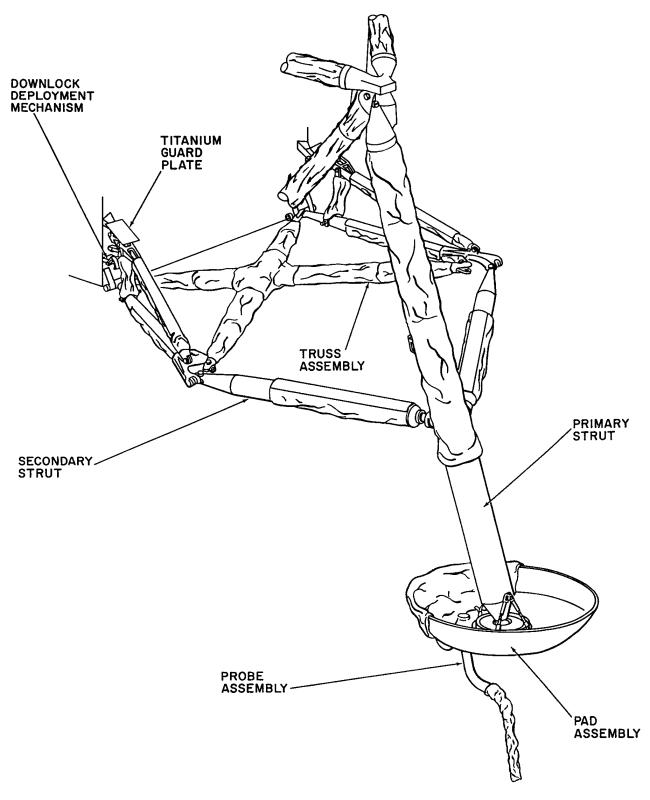Lunar Surface Sensing Probes
When touching down on the lunar surface, the Apollo lunar module could be damaged from the descent propulsion system engine exhaust gases, either because they would blow debris from the surface or simply from the blast bouncing off the surface and back at the LM. Thus, they needed to stop the engine when they were still several feet off of the lunar surface. There were concerns (which turned out to be well-founded) that dust blown up might obscure the astronauts' sight during the final moments before touchdown.
The solution to this dilemma was the use of lunar surface sensing probes. Mounted on the bottom of the landing gear's foot pad, they were essentially five-foot-long "feelers": Once one touched the lunar surface, a lunar surface "contact light" lit, indicating to the crew that they were in close proximity to the surface and that they should cut the DPS engine.
You can hear Aldrin call, "Contact light" during the Apollo 11 landing.
Originally, all four legs of the lunar module had contact probes (refer, e.g., to AS09-21-3199, showing Spider, Apollo 9's lunar module, in earth orbit). The contact probe was removed from the leg of the lunar module containing the egress ladder, out of fears that it would bend and jut up toward the ladder, ready to puncture a pressure suit. Starting with Apollo 11, only three legs sported probes.
Of course, having what amounted to five-foot spikes protruding from the bottom of the landing pads wouldn't do the S-IVB's liquid hydrogen tank any good (when the LM was nestled in the SLA during launch), so the probes were folded up toward the LM, as shown on Apollo 10's lunar module (photo S69-17810).
The Apollo Spacecraft News Reference (Lunar Module) [direct link to 4.5 meg PDF; part 2 of the Lunar Module News Reference at Indiana University's Apollo Technical Data Library] contains a description of the probes:
The lunar surface sensing probe attached to each landing gear footpad is an electromechanical device. The probes are retained in the stowed position, against the primary strut, until landing gear deployment. During deployment, mechanical interlocks are released permitting spring energy to extend the probes so that the probe head is approximately 5 feet below the footpad. When any probe touches the lunar surface, pressure on the probe head will complete the circuit that advises the astronauts to shut down the descent engine. This shutdown point which determines LM velocity at impact, is a tradeoff between landing gear design weight and the thermal and thrust reactions caused by the descent engine operating near the lunar surface. Each probe has indicator plates attached to it, which, when aligned, indicate that the probes are fully extended.
Click image for a 1857x2286 pixel version of this image in a new window.
Adapted from p. 22 of Apollo 11
LM-5 Structures Handout
Extraction and cleanup by heroicrelics.

